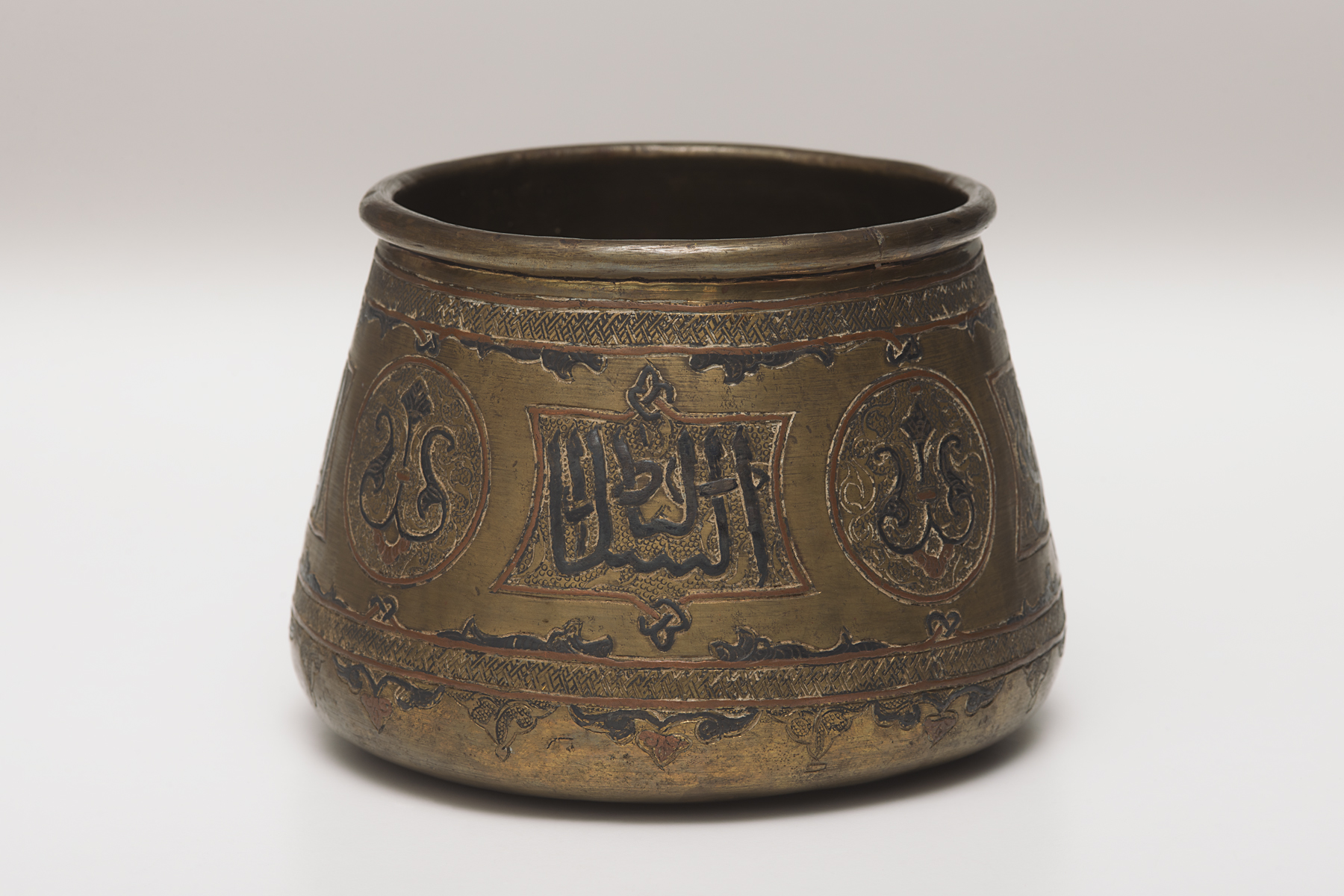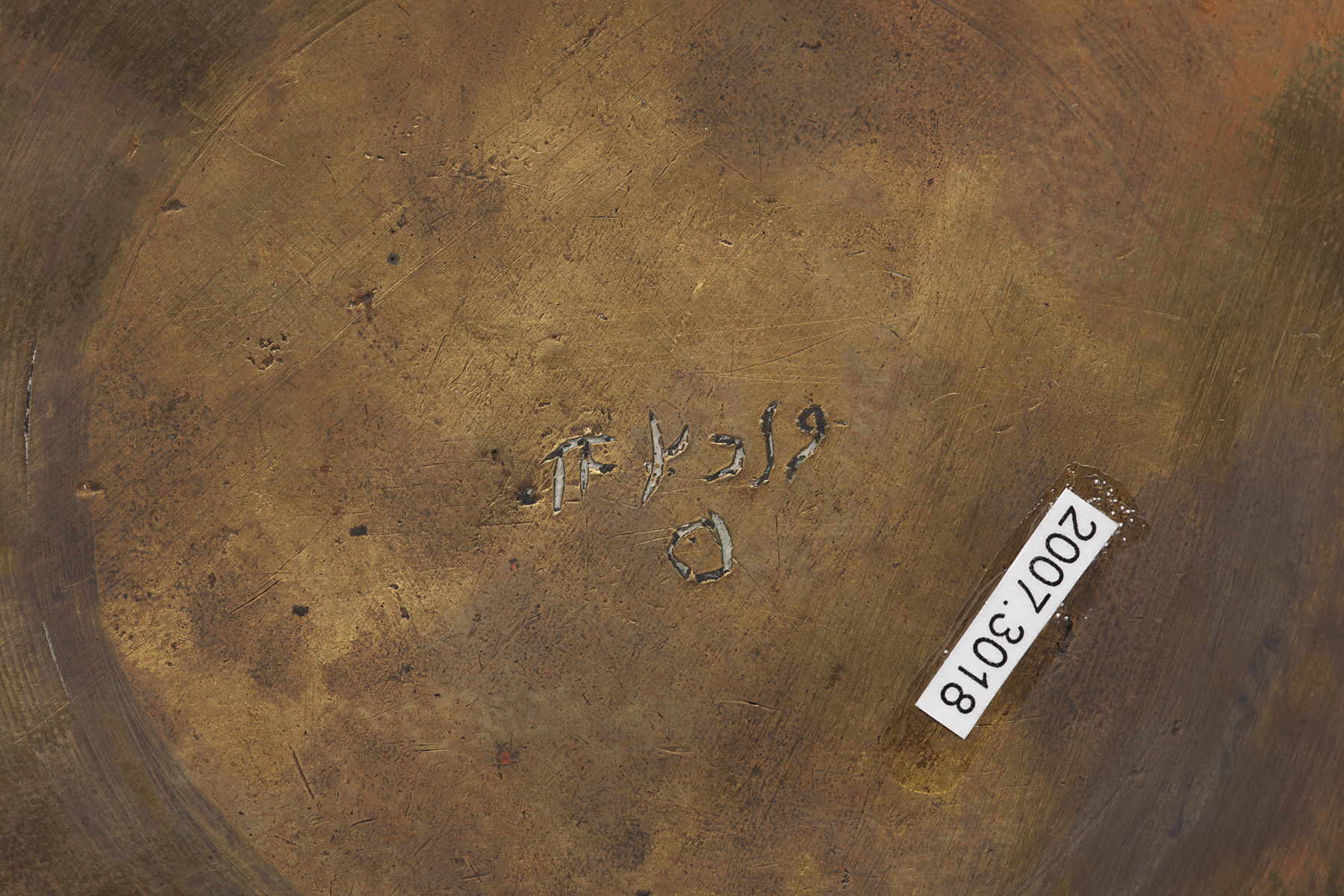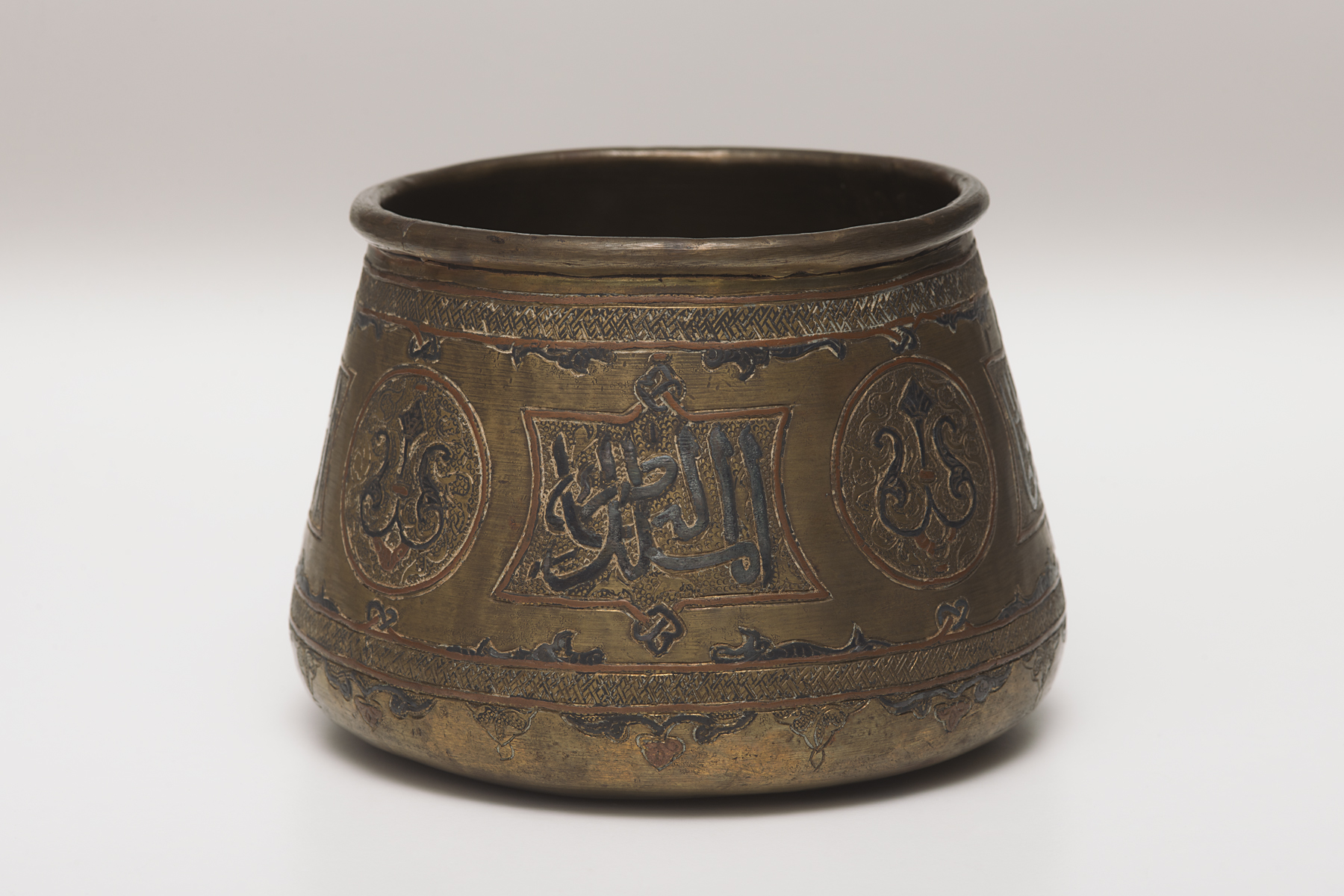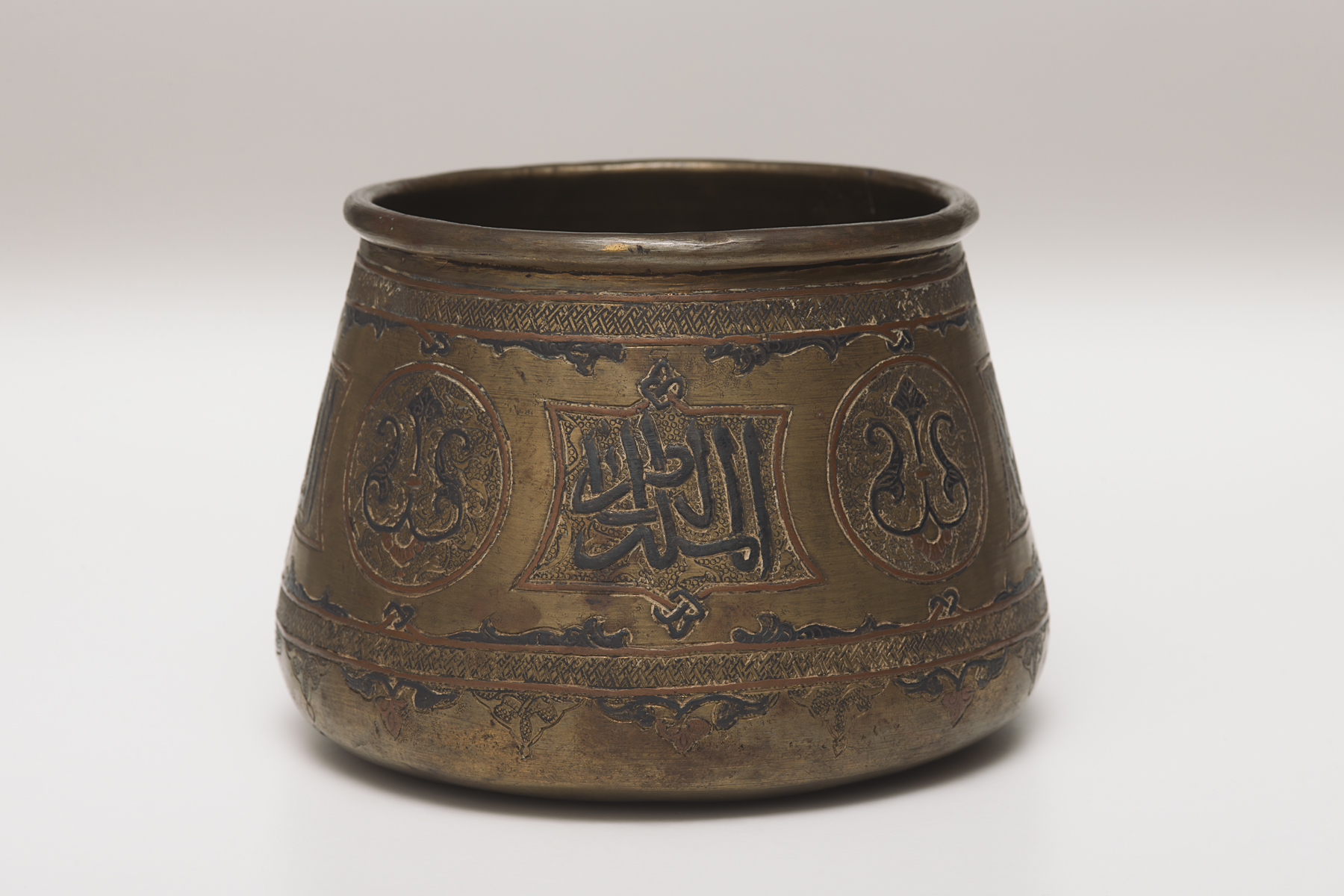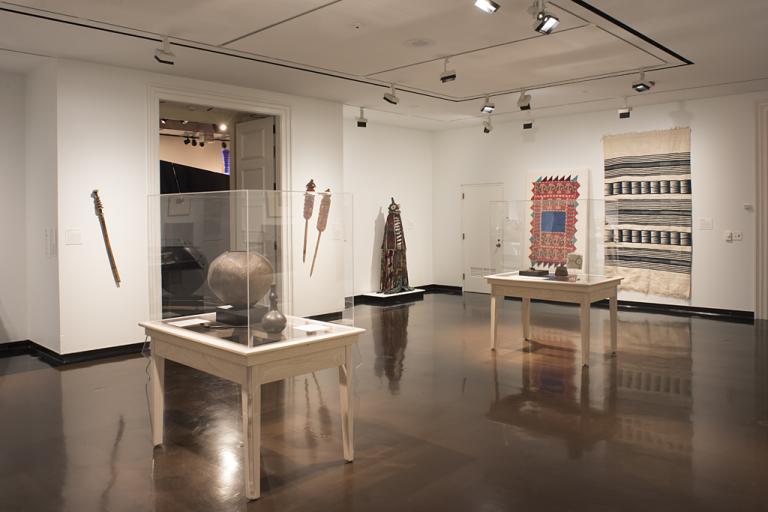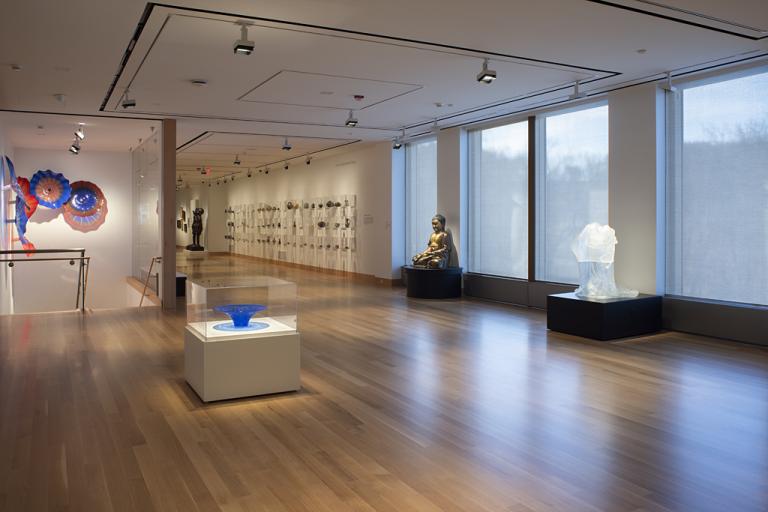brass pot, unrecorded Mamluk artist
Artwork Overview
unrecorded Mamluk artist, artist
brass pot,
1250–1517
Where object was made: Mamluk Sultanate (present-day Syria and Egypt)
Material/technique: bronze; zinc; copper
Dimensions:
Object Height/Diameter (Height x Diameter): 10.5 x 15 cm
Object Height/Diameter (Height x Diameter): 4 1/8 x 5 7/8 in
Object Height/Diameter (Height x Diameter): 10.5 x 15 cm
Object Height/Diameter (Height x Diameter): 4 1/8 x 5 7/8 in
Credit line: Gift of Dr. Curt Von Wedel
Accession number: 2007.3018
On display: Kress Gallery
If you wish to reproduce this image, please submit an image request
